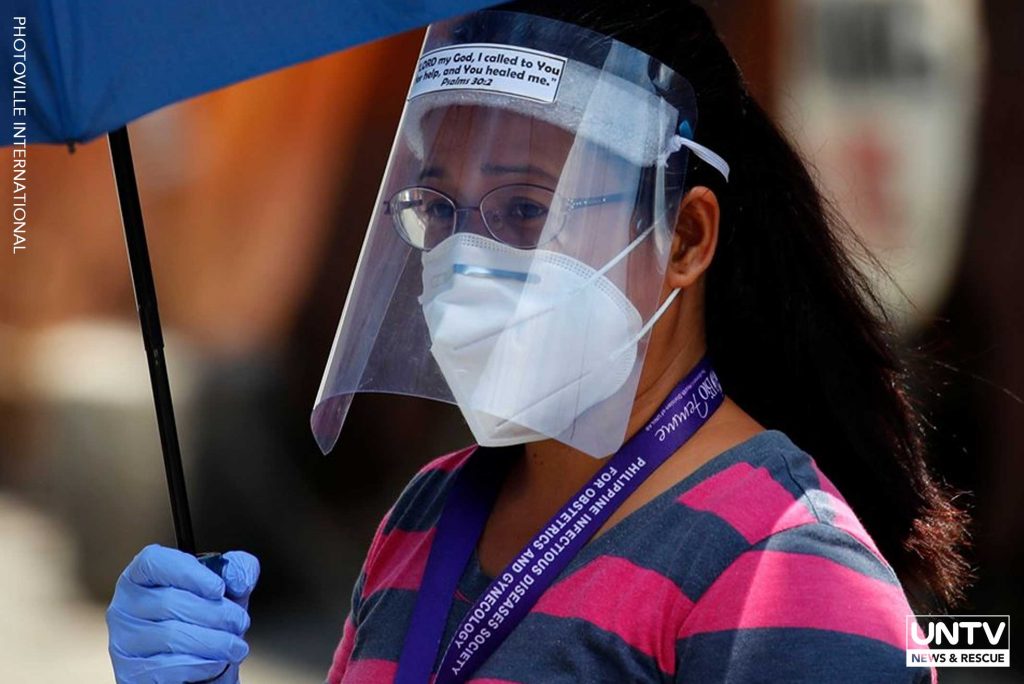Now Reading: Face shield increases exposure to COVID, says UP wind engineer
-
01
Face shield increases exposure to COVID, says UP wind engineer
Face shield increases exposure to COVID, says UP wind engineer
By Carlos Manuel Eusoya
 |
| PHOTO: Photoville International |
The effectiveness of face shields in preventing the spread of the coronavirus disease (COVID-19) is an ongoing debate in the scientific community, but a recent argument suggests that face shields increase the risk of exposure to the virus. University of the Philippines wind engineer Joshua Agar claimed that face shields have “aerodynamic consequences”, and may result in the suction of suspended virus particles in the air.
The World Health Organization and the Center of Disease Control and Prevention recently confirmed that COVID can be transmitted in the air via suspended aerosol particles. Engr. Agar said that negative pressure can pull air and surrounding aerosol particles towards the wearer’s face.
“Ang tendency ay nagkakaroon ng negative pressure region doon sa face shields. Nag-a-act siya as suction, so hinihigop niya kung ano man iyong nasa air. Most likely, pati iyong virus,” Agar further explained.
Aerodynamic nature of face shields
Agar also pointed out that vortices can form between the wearer’s face and the face shield. In aerodynamics, vortices occur when high and low pressures of airflow interact. The resulting region of air is the vortex. Vortices appear as masses of whirlwind-like air and change the direction of the regular airflow.
The vortices formed in the face shield can trap the air. Thus, the wearer will have a higher chance of inhaling the virus.
“Okay lang na ikaw iyong sumasalo sa hangin. Hindi naman sa iyo made-deposit kung ano iyong nasa hangin. Made-deposit siya kung saan mayroong vortices,” Agar clarified.
 |
| PHOTOS: GMA News |
Another factor Agar believes can increase exposure to the virus is the moisture caused by the face shield. Face shields serve as insulators and increase moisture on the face. “Na-insulate iyong hangin sa loob so iinit pa nang husto ang hangin. The moisture, [ito] iyong encouraging factor for the virus to stick into your skin,” the wind engineer further explained.
What does this mean to us?
No complete study has been done to confirm or deny the effectiveness of face shields against COVID-19.
Nonetheless, the Department of Health (DOH) started implementing the face shield policy last December 2020. DOH mandates the use of face shields for Filipinos going outside of their homes. DOH Sec. Francisco Duque stated that “any layer of protection is always better than less protection.”
IATF Technical Advisory Group for COVID-19 member Dr. Anna Ong-Lim also cited a study supporting the implementation of the use of face shields. “There are actually several findings from studies conducted. They indicated that meron pong evidence that eye protection such as face shields actually are able to reduce 78 percent infection,” she stated.
However, the aerodynamic nature of face shields, as explained by Engr. Agar, should be considered by the DOH and the national government. If face shields really do increase exposure to coronavirus, the government will have to reevaluate its policies against COVID-19.
Report sources: GMA News, World Health Organization, Wave Dynamics




















